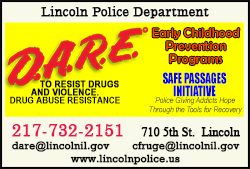|
Nine-year-old who defies labels helps
teach educators about queer youth
 Send a link to a friend
Send a link to a friend
 [June 19, 2019]
By Daniel Trotta and Amanda Voisard [June 19, 2019]
By Daniel Trotta and Amanda Voisard
(Reuters) - When a third-grade teacher from
Texas asked her mostly 8-year-old students what they wanted to be when
they grow up, one of them wrote on the white board: "drag queen."
That response came from Keegan, now 9, a "gender creative" kid, in his
mother's words, illustrating just one of the challenges facing educators
as they accommodate the range of gender identities that students might
express.
Reuters has agreed not to fully identify the family and school at their
request to protect them from potential harassment.
Educators who for centuries have divided students into boys and girls
are now figuring out better ways to address students who are nonbinary,
gender fluid and gender nonconforming, in addition to transgender kids,
whose gender identity differs from the one they were assigned at birth.
By one survey nearly 3 percent of youth in Minnesota fall under these
categories, identifying with neither gender, or both, or trans, or just
defying a traditional male/female binary option.

Some school districts in the United States are using more gender-neutral
language, addressing students by their preferred pronouns, which can be
"they," "them," "theirs" for an individual, or the invented "zie," "zir,"
"zirs," which are used as a substitute. Some schools also allow students
to easily change their preferred name or gender identity.
The degree of acceptance for such students can literally be a matter of
life and death, experts say.
A national survey of 34,000 LGBTQ youth aged 13 to 24 released last week
found 39 percent seriously considered suicide in the past 12 months, as
did more than half of transgender and nonbinary youth, according to the
Trevor Project, a pro-LGBTQ group focused on suicide prevention.
Another study, published in the Journal of Adolescent Health in 2018 and
based on a cohort study of 129 trans and gender nonconforming youth aged
15 to 21, found that suicide attempts plummet 65 percent and depression
symptoms fall 71 percent if they are allowed to use their chosen name at
school, home, and work, and with friends.
The issue comes up long before adolescence as gender identity typically
manifests itself in children by kindergarten.
"What's at stake is nothing less than the future lives of these children
and own health as a society," said Eliza Byard, executive director of
GLSEN, a national advocacy group for lesbian, gay, bisexual, transgender
and queer (LGBTQ) students.
"We still live in a world where the most marginalized are not receiving
the support and affirmation that they need in order to achieve
academically and thrive personally. And we all will benefit when that is
true," Byard said.

STONEWALL LEGACY
Transgender rights have risen to the fore in recent years and as LGBTQ
people prepare to mark the 50th anniversary since the Stonewall uprising
of June 28, 1969. The protests by patrons of a New York City gay bar,
who fought back against police harassment, is considered the birth of
the modern LGBTQ rights movement.
Keegan is one student who has benefited from the Stonewall.
[to top of second column]
|

Keegan, 9, who identifies as gender creative, plays video games with
his mother Megan, 33, at their home near Austin, Texas, U.S., May
17, 2019. REUTERS/Amanda Voisard

He plays soccer and video games and also likes to dress as a girl,
using the name Kween-Kee-Kee when in drag, his parents say. Among
his mentors are a pair of real-life adult drag queens. He usually
goes by the pronouns "he," "him" and "his."
Keegan has found acceptance and support at his school in a
conservative, Christian suburb outside of Austin, Texas, his mother
said.
"We expected a lot of pushback from the school and we expected some
intolerance, but we've been very surprised," said Keegan's mother.
Keegan's teacher paid close attention during the lesson on financial
literacy, when other students aspired to be doctors and dentists and
Keegan wrote "drag queen."
"One of the students asked, 'What's that?' and Keegan kind of said
'I don't know' and moved past it," said his teacher.
"But I do see little, like, hints of him trying to make people aware
that this is something that he is, something that he does."
Neither Keegan's teacher nor his principal said they received any
formal training on educating gender nonconforming students and have
worked with intuition and observation.
The teacher wants to let Keegan bring up the subject "at his own
pace."
His parents, too, have wanted to "let Keegan be himself" and not
impose any norms on him. They said they were surprised on Friday
when, five years after he first started wearing dresses and a full
year after they began cooperating with a photographer on this
project, he said he was gay.

Minneapolis Public Schools in Minnesota offer some of the most
extensive guidelines for teachers, students and parents as part of
its Out4Good program supporting LGBTQ children, outlining polices
developed over 20 years on names and pronouns, gendered activities
and facilities, and safety and bullying, said Jason Bucklin, the
Out4Good coordinator.
Some 2.7% of Minnesota high school students identify as transgender
or gender nonconforming, according to a 2017 University of Minnesota
study.
A gender-inclusive curriculum can prevent the kind of bullying that
typically begins in grade school and can evolve into homophobia by
middle school and sexual harassment or dating violence by high
school, Bucklin said.
"It isn't just about the transgender students," Bucklin said. "It is
about bringing everybody into the classroom and having the ability
to feel successful."
(Reporting by Daniel Trotta; Additional reporting by Amanda Voisard;
Editing by Frank McGurty and Grant McCool)
[© 2019 Thomson Reuters. All rights
reserved.]
Copyright 2019 Reuters. All rights reserved. This material may not be published,
broadcast, rewritten or redistributed.
Thompson Reuters is solely responsible for this content. |